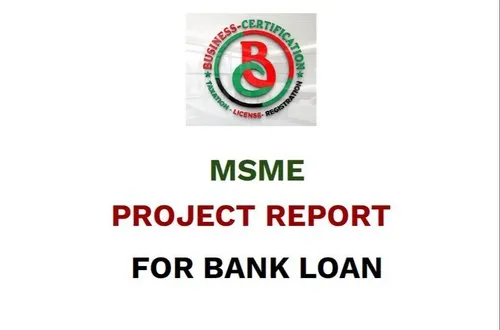LoanBaazar is excel in offering Home Loan, Mortgage Loan, Business Loan, Personal Loan, Education Loan, Credit Cards, SME Working Capital Loan and Equipment Finance at the most competitive rates from all leading Banks and NBFCs.

Small and Medium Enterprises (SMEs) play a crucial role in the country’s economic growth and development. These enterprises contribute significantly to employment generation, innovation, and overall industrial progress. However, accessing financial assistance, especially in the form of bank loans, is often a challenging task for SMEs. One of the key requirements for obtaining a bank loan is the submission of a well-prepared project report. This article serves as a comprehensive guide for SMEs in India on how to make project report that enhances the chances of securing a bank loan.
The executive summary provides an overview of the entire project report. It should include a brief description of the business, its objectives, the loan amount required, the purpose of the loan, and the repayment plan. It should effectively summarize the key highlights of the project, showcasing its viability and potential for success.
This section provides detailed information about the SME, including its legal status, registration details, organizational structure, history, and key management personnel. It should outline the company’s vision, mission, and objectives, giving the lender a clear understanding of the business.
Here, you need to provide a detailed description of the project for which you are seeking a loan. Outline the project’s goals, activities, and expected outcomes. Include information about the products or services to be offered, target market, competitors, and marketing strategies. Demonstrate your knowledge of the industry and present a clear business model.
Conduct a thorough analysis of the market and industry in which your business operates. Identify the target market segment, customer demographics, and buying patterns. Analyze the competition, their market share, strengths, weaknesses, and strategies. Present market trends, growth prospects, and potential challenges. This analysis will demonstrate to the lender that you have conducted a comprehensive assessment of the market and have strategies in place to address competition.
Provide detailed financial projections for the project. Include projected income statements, balance sheets, and cash flow statements for the next 3-5 years. Use realistic assumptions and clearly explain the basis for these projections. Highlight key financial indicators such as profitability, liquidity, and solvency ratios. Show how the loan will be utilized and the expected return on investment.
Outline a step-by-step plan for project implementation. Describe the various phases, timelines, and resource requirements. Provide a comprehensive breakdown of the project cost, including capital expenditure, working capital requirements, and operational expenses. This section should demonstrate your ability to effectively manage and execute the project.
Identify potential risks and challenges associated with the project. Assess the probability and impact of each risk and propose mitigation strategies. This will show the lender that you have carefully evaluated potential obstacles and have contingency plans in place to minimize their impact.
Clearly outline the collateral or security you can provide to secure the loan. This can include assets such as property, machinery, equipment, or personal guarantees. Provide relevant documents and valuations to support the value of the collateral.
Present a detailed repayment plan, including the proposed loan tenure, repayment schedule, and interest rate. Clearly demonstrate how the project’s cash flows will be utilized to repay the loan and showcase the project’s financial sustainability.
Summarize the key points of the project report, emphasizing its viability, profitability, and potential for success. Reiterate the loan amount required and the benefits the lender will gain by financing the project. Express gratitude for the opportunity to present the project report and your willingness to provide any additional information or clarification as required.
Include any supporting documents such as balance sheets, income statements, cash flow statements, market research reports, licenses, permits, or any other relevant information.
Remember to ensure that the project report is well-structured, professionally presented, and free of grammatical errors or inconsistencies. Seek expert advice, if necessary, to ensure that your project report aligns with the specific requirements of the bank or financial institution to which you are applying for a loan.
By following this comprehensive guide, SMEs in India can create a compelling project report that enhances their chances of securing bank loans, enabling them to fuel their growth, expand operations, and contribute to the nation’s economic development.
To get a professional detailed project report for your business setup, learn more at https://loanbaazar.com/project-finance/ and may contacted at [email protected] / + 91 9975829320.
For govt schemes for the project loan pls visit to https://www.kviconline.gov.in/pmegpeportal/pmegphome/index.jsp